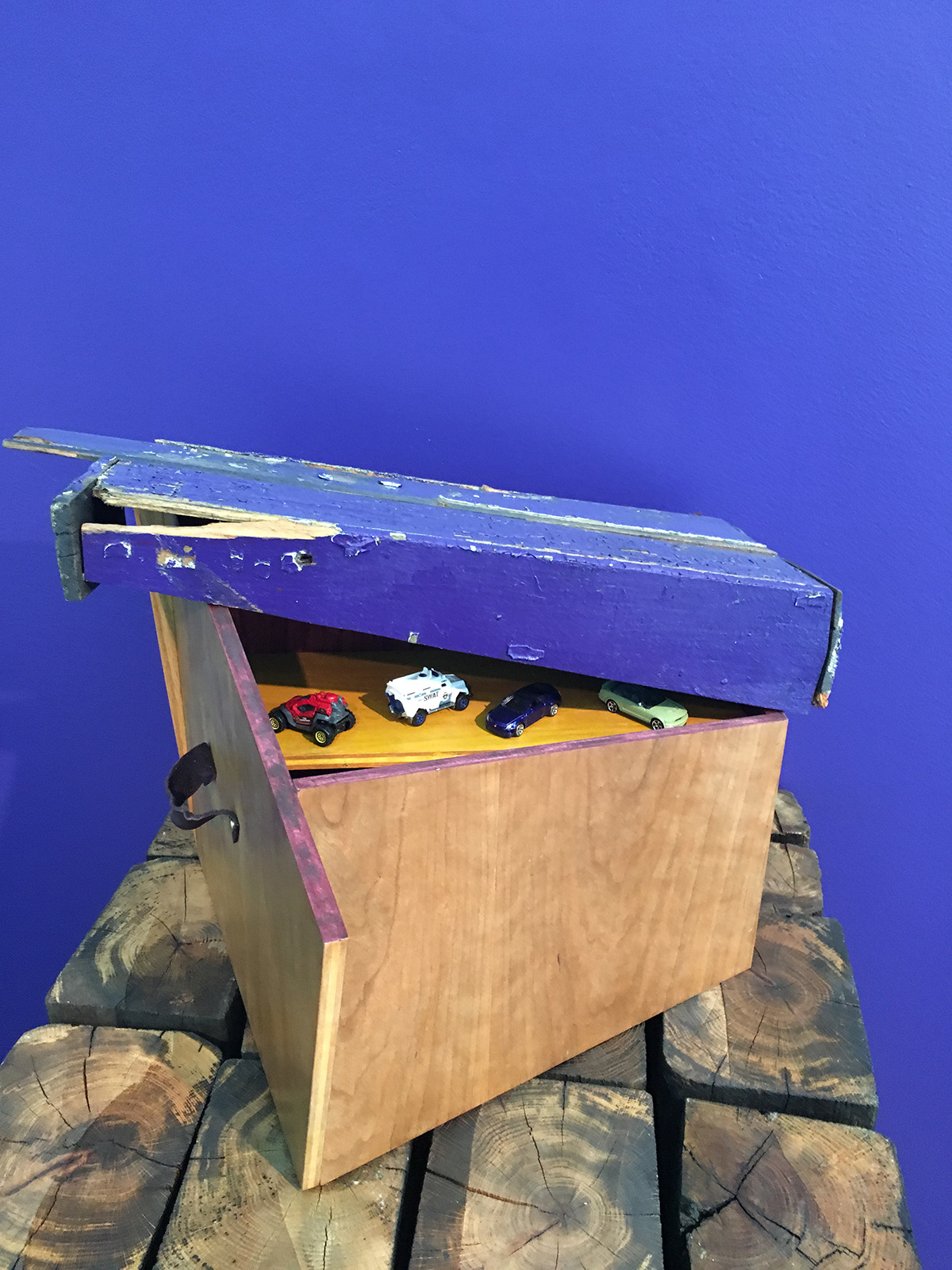Small Voices, Big Impact
By Elizabeth Alba
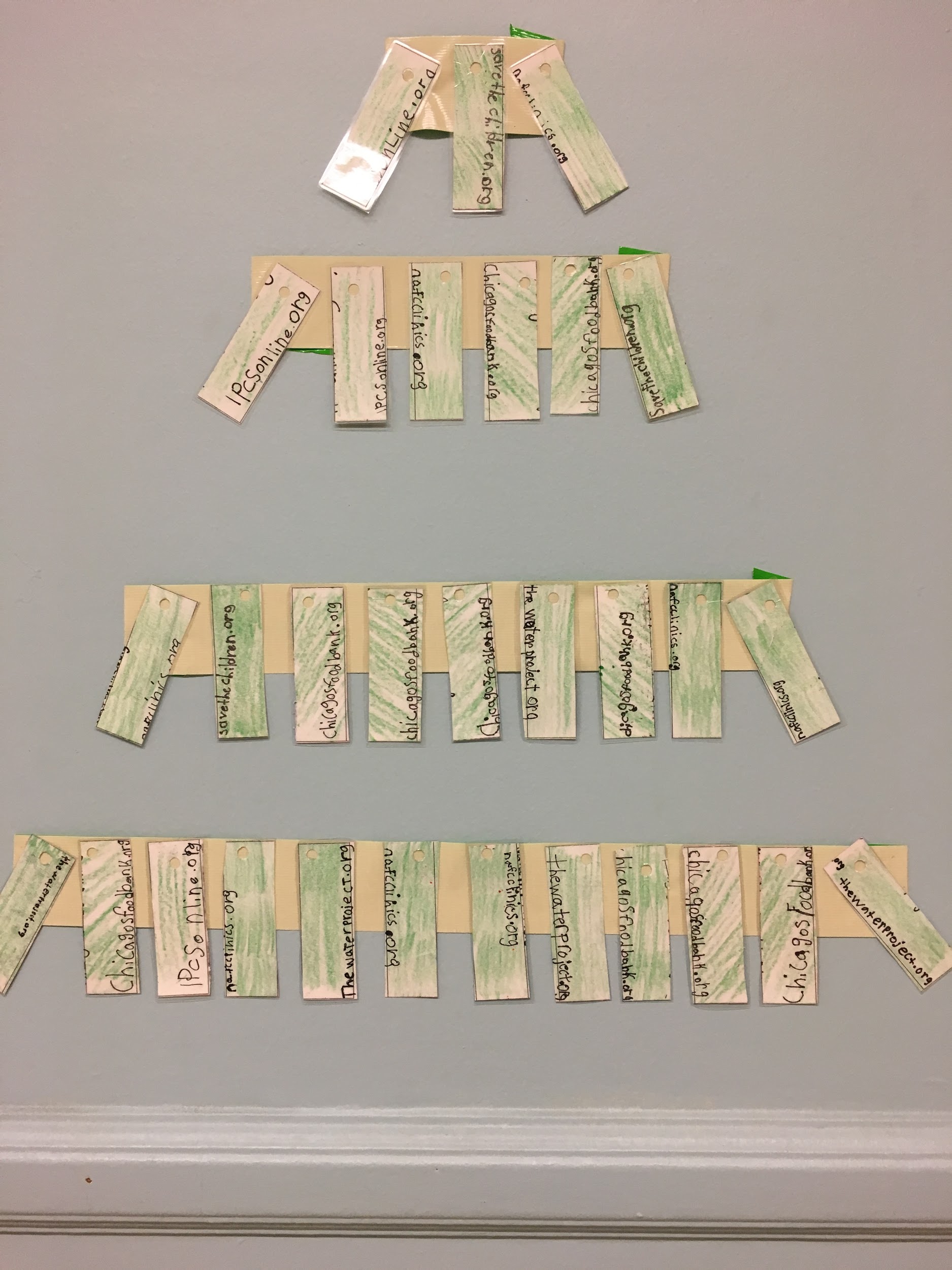
The youngest students often associate the holidays with receiving gifts. However, second graders at Inter-American Magnet School had been wondering what they could do to help others after hearing about the effects of natural disasters on communities. Their teacher responded by guiding them to research the basic needs that many people do not have (shelter, water, food, healthcare, education, etc.), and to identify organizations that try to help in meeting these needs. The teacher led students to the works of Michael Rakowitz, engaging them in critical dialogues about how artists create symbols to tell stories about issues that matter to them. Students used research and contributed original works of symbolic art to raise consciousness in our school community about how we can help solve the problems that matter to us. Students displayed their artwork outside of the auditorium during our holiday assembly. They created small ‘keychains’ that had the websites to these organizations written on one side and placed them next to their art display so that families could take one and learn how to help those who help others.
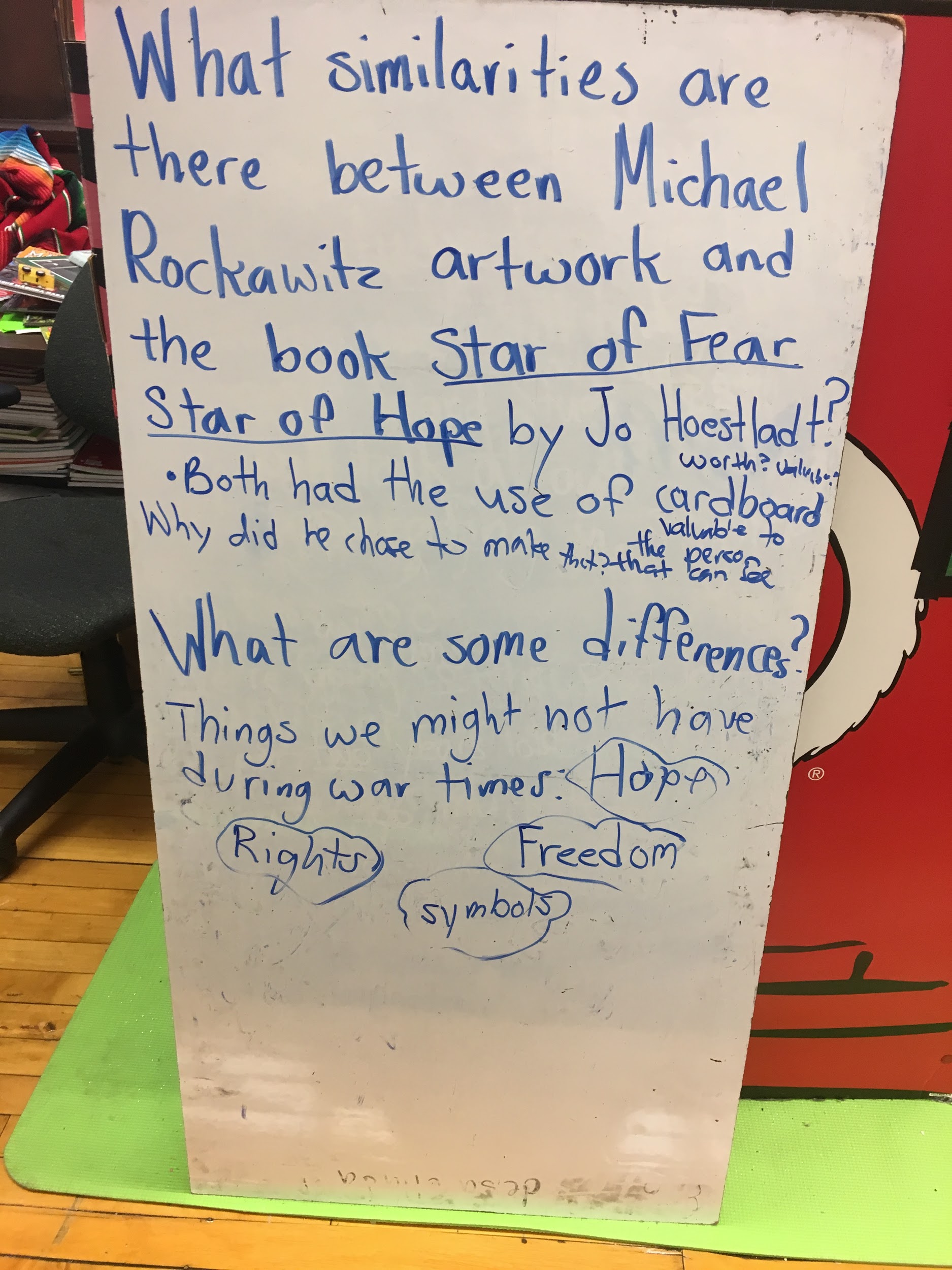
Goals
- Students will understand what a symbol is and observe and describe symbolic objects in our school and in their own neighborhood.
- Students will learn the importance of material selection based on their preference and also the message that they want to convey.
- Students will learn the power of sharing stories about topics that are important to them.
Standards
- SS.EC.1.2. Demonstrate how our choices can affect ourselves and others in positive and negative ways.
- CCSS.ELA-LITERACY.SL.2.1.A. Follow agreed-upon rules for discussions (e.g., gaining the floor in respectful ways, listening to others with care, speaking one at a time about the topics and texts under discussion).
- CCSS.ELA-LITERACY.SL.2.3. Ask and answer questions about what a speaker says in order to clarify comprehension, gather additional information, or deepen understanding of a topic or issue.
Guiding Questions
- Who assigns value to objects?
- What materials last forever?
- How can a single item capture or tell a story?
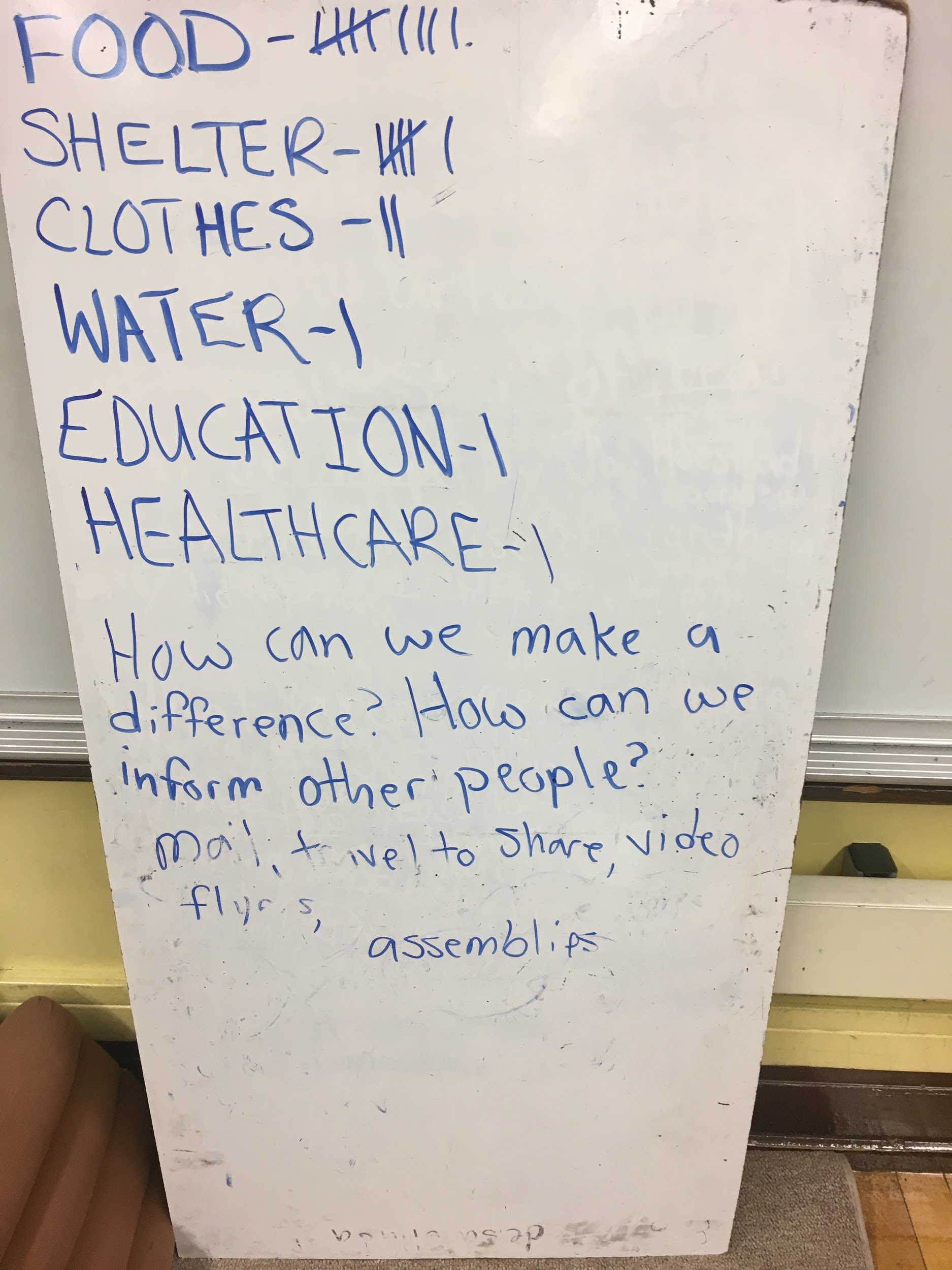
Documentation + Assessment Strategies
Students use Voice Memo, photography, and sketchbooks to document their process. We did a checklist midway through the steps to see what students had completed so far. Students self-assessed where they were in the process and when they thought they had completed their project.
Learning Activities
Setting the Stage
After a field trip to the MCA, we started our community unit. In November, we began to discuss symbols and traditions. We worked on this project for 30 minutes, 3 times a week, for 5 weeks, until the December Holiday Assembly on December 15th. I spent 2 weeks setting up their thinking, questioning, and dialogue mindset. I needed to establish a particular classroom culture of dialogue, no right answers, process over product, before we dove into this project.
STEP 1
Contemporary Art as Catalyst
Students are introduced to contemporary art through a visit the Museum of Contemporary Art. There, they engage in critical dialogue about contemporary art with an Artist Guide, with emphasis on the work of Michael Rakowitz.
STEP 2
Introducing Materials, Meaning, and Value
In the classroom, the teacher reactivates the field trip experience by projecting images from the MCA exhibition page of work by Michael Rakowitz. Discussion questions include:
- Why do you think the artist created this?
- Why do you think the artist thinks this is important?
- What materials did the artist use to create these works of art?
- Why do you think the artist chose that material?
- Does the artwork ‘tell’ a story?
- What does it ‘say’ to you when you look at it?
STEP 3
Distilling Key Themes for Student Projects
Building on the critical dialogue about materials, meaning, and value, the teacher transcribes key themes from students’ own ideas. A special emphasis is placed on defining ‘symbolism’ and connecting student ideas about materials, meaning, and value with the concept of a ‘symbolic representation’ that sums up a message.
STEP 4
Star of Fear, Star of Hope
The teacher introduces a “symbolism” literacy integration by reading Star of Fear, Star of Hope by Jo Hoestlandt. Students discuss how the symbol of a star can have multiple meanings depending on how it is used, and speculate about the author’s purpose for writing this book.
STEP 5
Synthesizing Parallel Mediums
Students compare and contrast collected overall themes and purposes of Hoestlandt’s text and Rakowitz’s artwork to further their understanding of symbolism, storytelling, and artistic intention. We had an oral discussion as a group and wrote down overarching themes on the board.
STEP 6
Helper Organizations / Student Research
Students explore the idea of a helper organization by identifying social problems that matter to them and undertaking independent research to identify an organization that has the mission of solving that social problem. What would happen if these organizations could help everyone they intend to help? What would happen if they were not able to help everyone affected?
STEP 7
Creating a Helping Symbol
How can we use symbolism, like Hoestlandt text and Rakowitz do, to create a symbol that raises consciousness? Students use artist’s materials to create a symbolic object to raise consciousness about a social problem that matters to them. Students divided into groups and each group worked on showing a world in which no one had access to a certain basic need and the others showed a world in which everyone had access to these basic needs. Their works of art would be displayed in the hallway facing the main office.
STEP 8
Sharing our Message
We held a discussion about our mission of getting out our message about the importance of helping others. We created a class lists of some of the different options for distributing the information in a effective way. Students discussed flyers sent home, going door to door, and I pushed them further to think about what would be easy for people to carry or keep. Keychains are a familiar object that can communicate information and imagery; it wasn’t something we had to sell. So we discussed: Being in our school, with our materials and constraints, what CAN we make? And how does that product achieve our conceptual goals? On one side of the keychain, students wrote the organization’s website URL. I contacted each of the organizations personally to let them know we would be sharing their website with our community to raise awareness. I received 3 responses—all positive—and some even suggesting the possibility of holding a fundraising event in the future.
STEP 9
Engaging the Community
The day of the Holiday Assembly, we set up the art display by the main office. In the middle of the art display, we placed the keychains in a box for people to take with them.
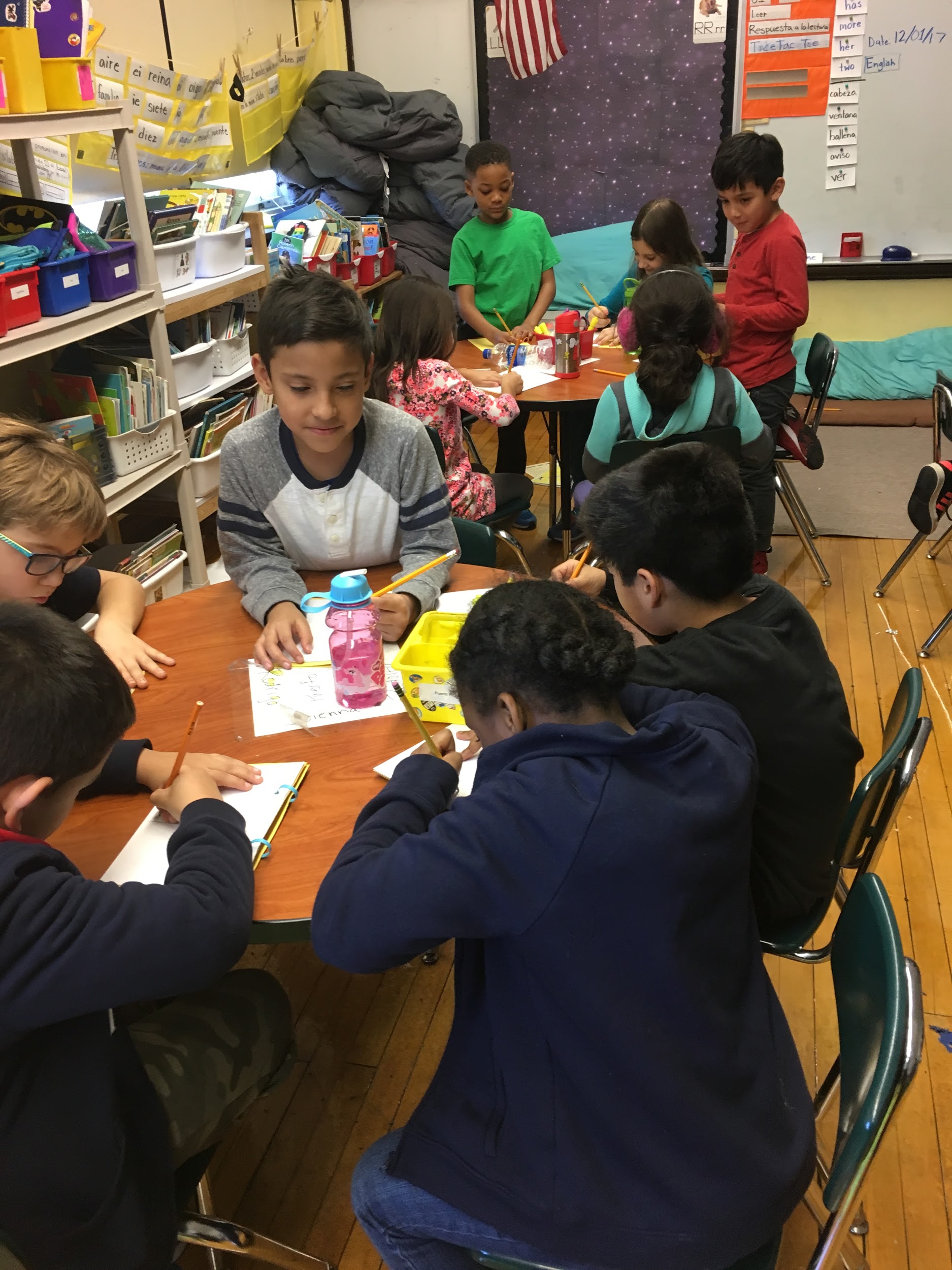
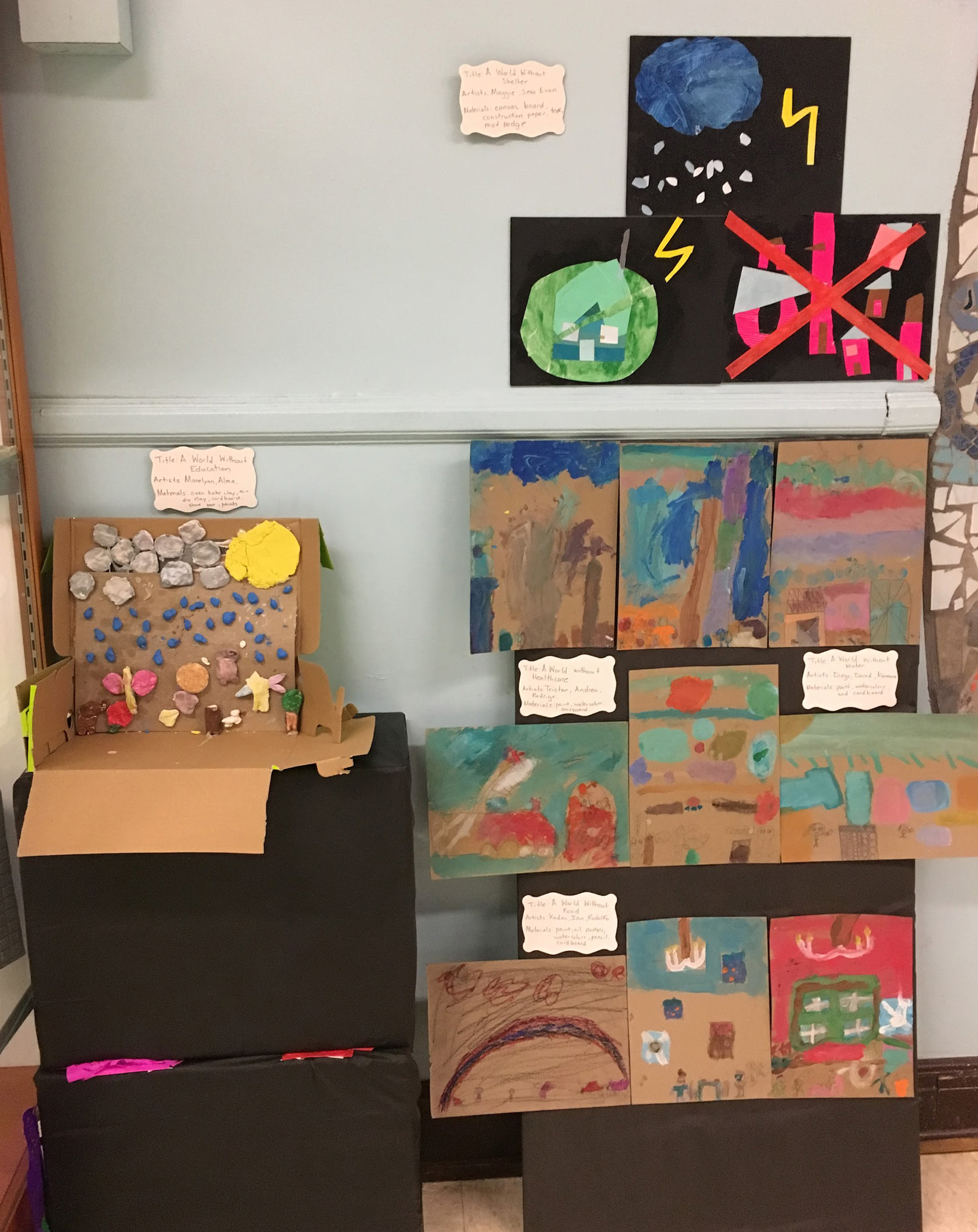
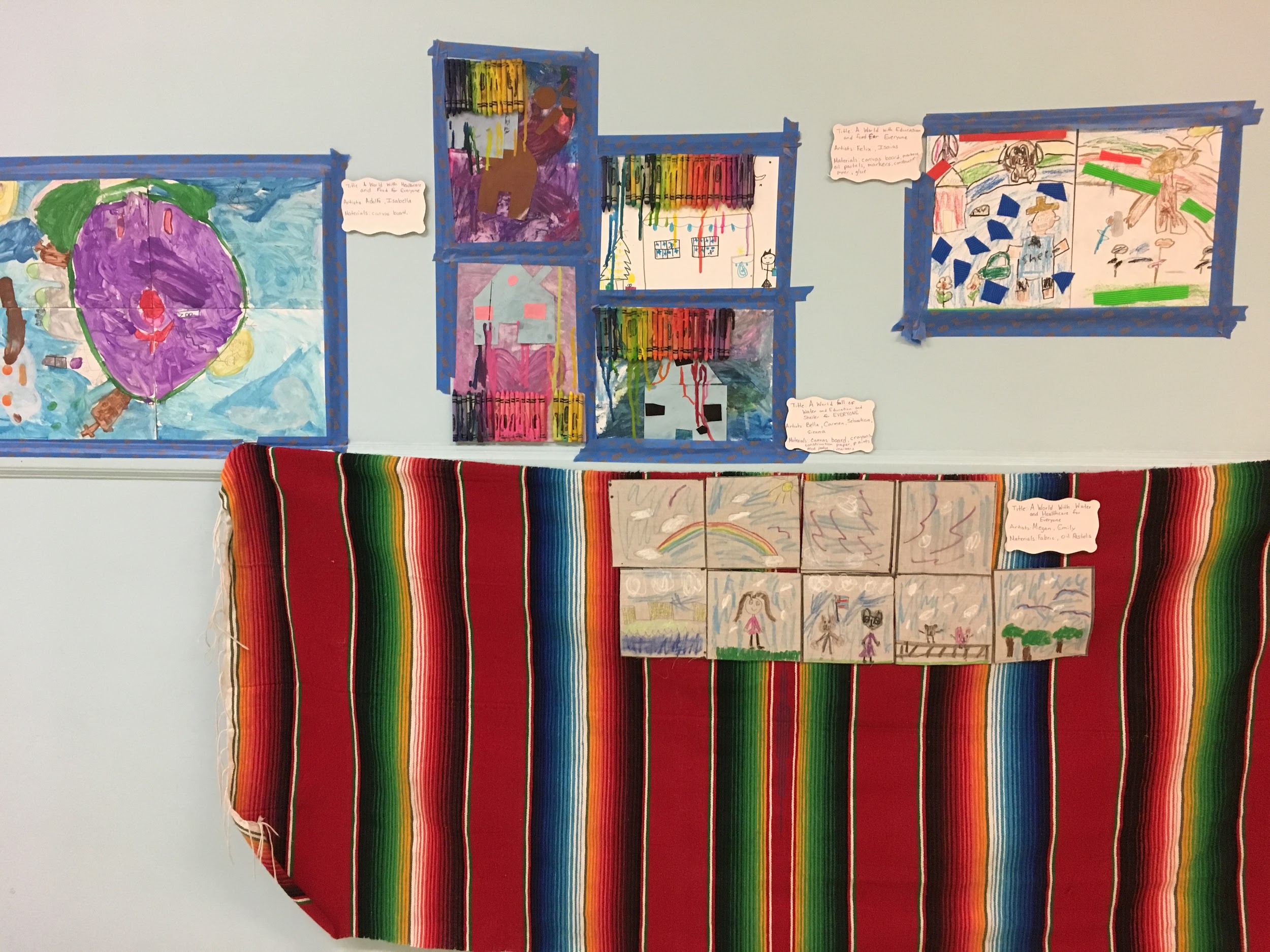
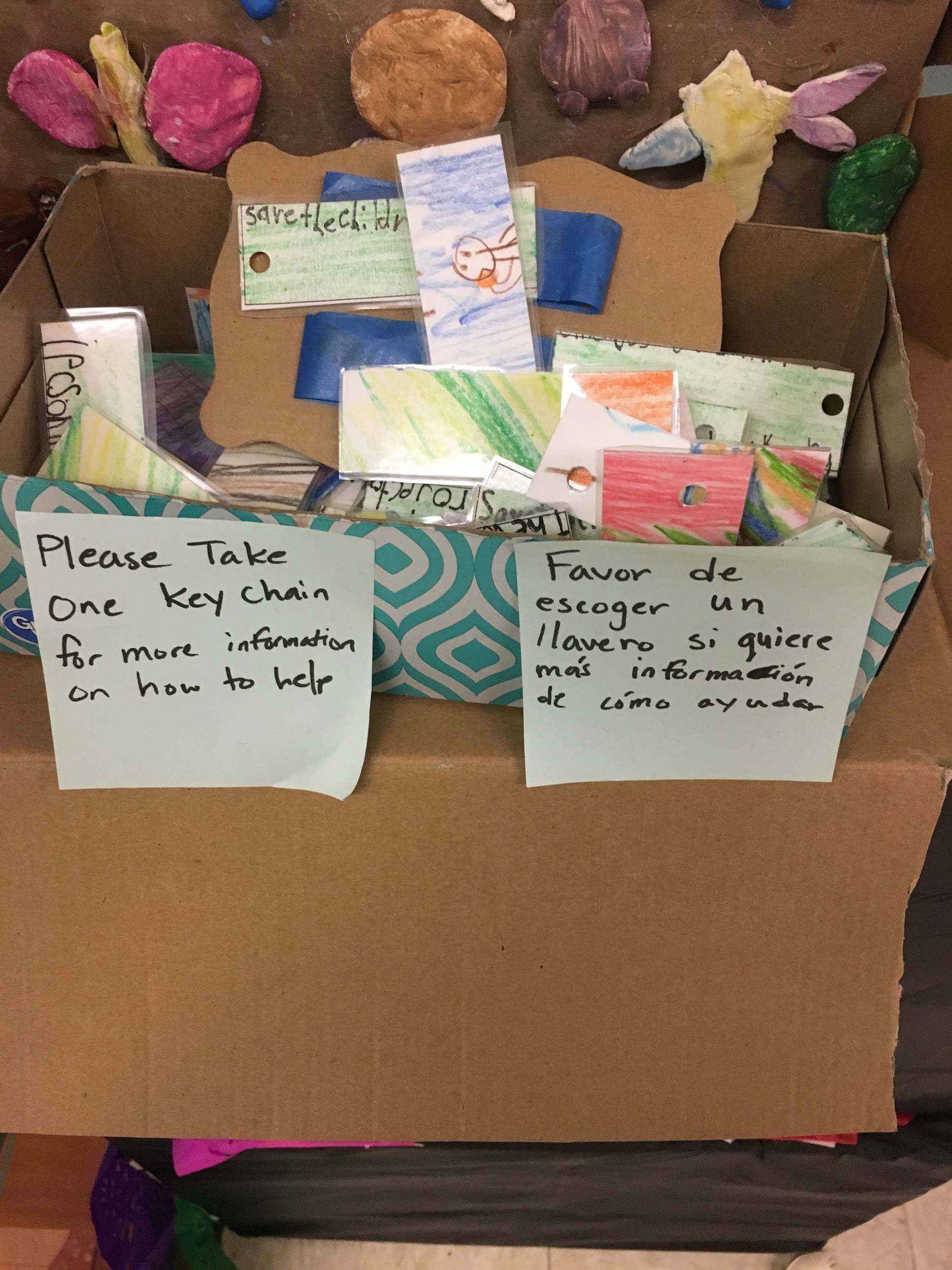
Materials
- Sketchbook paper, hole puncher, zip ties and construction paper to create sketchbooks for each student
- Watercolors
- Tempera paint
- Oil pastels
- Clay
- Pieces of fabric
- Leftover cardboard scraps
- Pieces of crayon
- Canvas board
- Paint chips
- Pieces of scrap construction paper
- An iPad to document and research organizations
MCA Connections
Students visited the MCA to see the exhibition Michael Rakowitz: Backstroke of the West and engaged in critical dialogue about contemporary art.
In the classroom, students engaged particularly with the following objects by Rakowitz:
- May the Arrogant Not Prevail, 2010
- The series The Invisible enemy should not exist, 2007–present
- The worst condition is to pass under a sword which is not one’s own, 2009
These objects provided the central catalysts for dialogue towards understanding the concepts in the lesson objectives, as described in the activity steps.

References + Resources
Elizabeth Alba
Inter-American Magnet School
About Elizabeth Alba
I have been teaching 2nd grade at Inter-American Magnet school for seven years. I work at a dual language school which is very important to me since I was a bilingual CPS student for all my schooling and never felt truly a part of the school. I obtained my Masters in Bilingual/Bicultural Education from Northeastern University. Being the child of two immigrant parents who did not complete any schooling beyond 6th grade, I am always looking for ways to build partnerships with outside agencies in our school so that we can provide our students with different opportunities.
Elizabeth Reflects on the Project
While I was contacting organizations to let them know we were putting their website information on keychains, I realized that I could have taken this further and we could have fundraised or done a bit more maybe with one organization and maybe the students could have decided this. I continue to work with the art teacher and we are discussing further collaborations with students creating art with their recycled objects. There were way too many options for students in regards to material they could use, and it was hard for them to come up with more abstract thinking; they needed concrete examples and guidance. I would maybe give a bit more structure and parameters, because it is hard for 2nd graders to handle so much freedom. When I helped them research, versus when they researched with their parents, they seemed to grasp a bit more the ideas of what we were discussing and they were able to see logos and symbols on the websites we visited. Some students were not aware of how many people lack access to some basic needs and they are just familiar with or discuss ‘homeless’ or ‘poor people.’ It was very important to me for students to understand and reframe their thinking towards those less fortunate than us.
